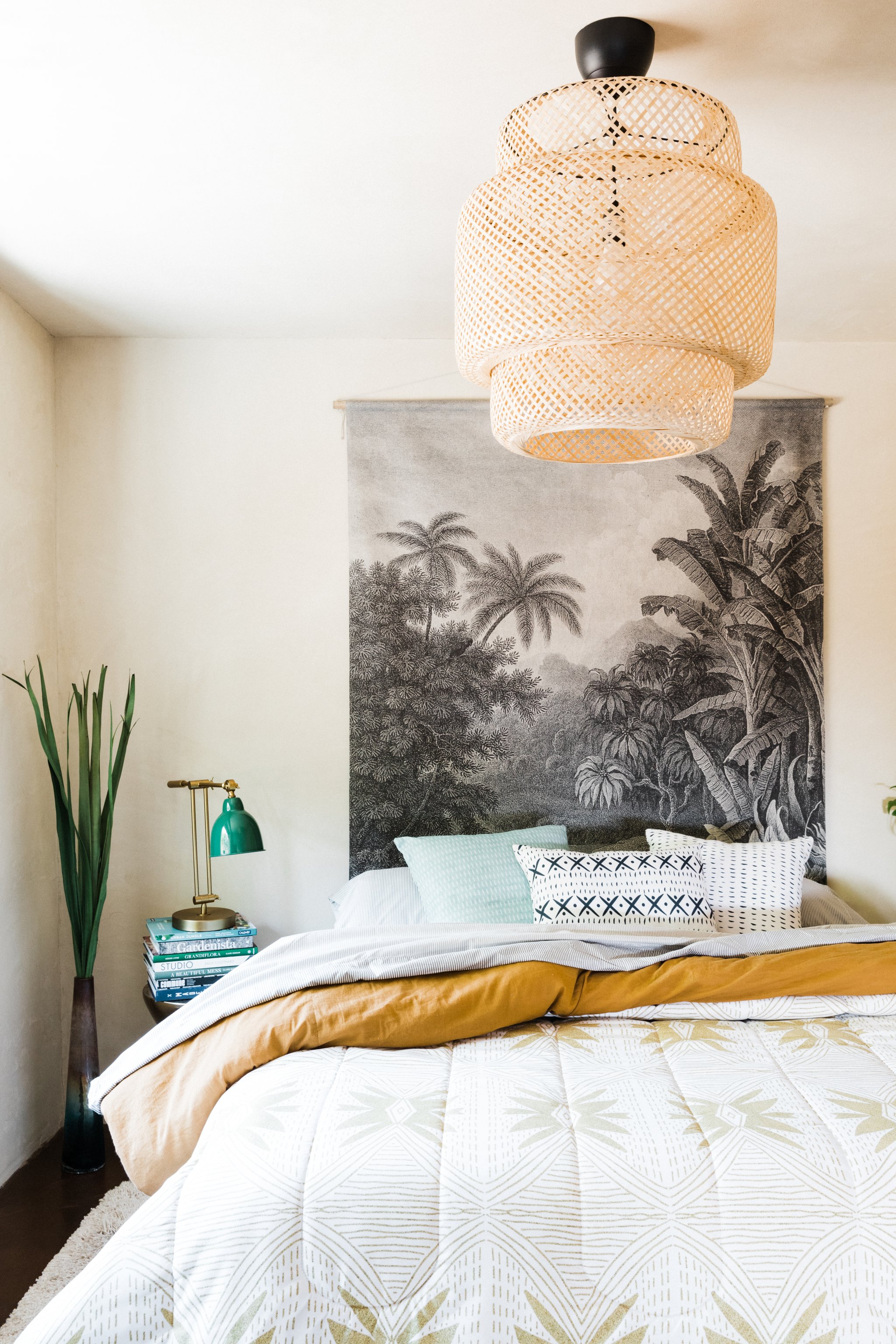We may earn revenue from the products available on this page and participate in affiliate programs.
Not many people get the opportunity to build their dream home from the ground up, and for those who do, they might imagine that it’s a one-and-done situation. You plan exactly what your perfect house will look like, you build said perfect house, and you’re perfectly content to live in the finished product without changing anything for years to come.
For Holli Zollinger, a pattern designer and Society6 artist, living in her dream house has proven to be a more evolving process. “Even though I was making most of the decisions on the design and layout throughout the build, I did encounter errors in judgment and made some of those decisions without doing any research,” she admits, though she says the things she would change are super minor. “I have to say, though, the space is ever-changing. It’s as if I’m learning what the house wants and what makes me love it even more!”

Inspired by Moroccan art and architecture, the 729-square-foot straw bale adobe home Zollinger shares with her 11-year-old son and two Persian cats is ever the desert oasis. She wanted to emphasize raw, natural materials—hence all the clay, plaster, and stone detailing—and avoid the dark “cave-like” qualities of some Adobe homes by opting for a lighter color scheme.

She especially fell in love with the cream-colored plaster walls, which tuck into recessed shelving and niches in various parts of the home. “At first, it was really hard to put anything up,” she says. “Wanting to see more wall than art influenced my decision, and I ultimately chose details that were simple and minimal.”

Those details, minimal though they may be, were heavily inspired by the surrounding desert landscape of Moab, Utah. Cacti and woven textures run throughout—though the sporadic inclusion of more tropical plants has led to an overall fusion of styles, which Zollinger describes as “desert-meets-tropical.” For anyone ready to jump aboard the Southwestern style bandwagon that’s everywhere in design right now, her home is a great example of how to participate in one trend without going overboard or limiting yourself to a cliché.

Living in a small town, Zollinger turned to online shopping to furnish the space. She calls out sites like Etsy and Chairish for one-of-a-kind or vintage decor and also loves places like HKLiving, One Kings Lane, Home Goods, World Market, and even Ikea for unique-looking items. And, of course, “sites that go the distance to support independent designers and artists, like Society6.”

A visual artist for over 25 years, Zollinger started designing textiles in 2008. “I remember how hard it was making the transition from working at the easel to working on the computer,” she recalls, saying how she taught herself Photoshop and Illustrator to turn her designs into a business. Her gorgeous prints, which vary from bold botanicals to subdued desert themes, feature in her own home—though she readily admits that incorporating her work in her personal space is a challenge.
“I tend to be ‘so over’ things quickly, so I have to keep it simple and timeless,” she says. “A good portion of my work now is influenced by what might look good in my home. So there’s a lot of trial and error, as I am continually teaching myself about good design and honing my skill in the process.”

If you want to start experimenting with pattern more or are thinking about dipping your toe into the desert trend, Zollinger shared her top tips for mastering both with us.
It’s okay to not be perfect
“This is a big one, as I think a lot of people don’t act because they’re afraid to make a mistake. There’s a huge misconception that designers just get it right the first time they place a piece on the wall—I have a whole shed full of things that didn’t quite work out,” she says.
Start with a mood board, something to gather all your inspiration together and look for common threads. Be it a physical board with magazine clippings and wallpaper samples or a digital one in the form of Pinterest or your Instagram “saved” folder, this goes a long way. Then? “Edit, edit, and edit,” she says. “If you can remember that you’re on a journey with your home, this will release some of the pressure to always be right.”

Mix and match
Something to keep top of mind before you even start shopping for desert-inspired pieces: “blending textures and textile patterns is very important to this look,” says Zollinger. Take notes from the designer’s own home—throw pillows with varying prints, layered over a bed quilt with an entirely different pattern. A bathroom that features wood cabinets, concrete counters, and stone sinks. A rattan accent chair with sheepskin and velvet pillows. Layering pattern and material is the easiest way to create a visually interesting space.

It all starts with a rug
According to Zollinger, this is the key to creating the right desert vibe. “Invest in a good rug. Authentic (and sometimes inexpensive) Turkish Kilims or Moroccan Berbers are very accessible these days, either used or new,” she recommends. Look to online brands like Revival Rugs or Frances Loom to start your hunt for the perfect carpet.
Sometimes, clichés work
“Succulents, plants, and cacti go a long way to creating the desert vibe,” says Zollinger. If it ain’t broke…

See more desert-inspired homes we love: This Designer Created a Bohemian Oasis in Joshua Tree This Stunning Nevada Retreat Sums Up Modern Design Living Inside an Eco-Friendly Joshua Tree Retreat That Brings Design to the Forefront
